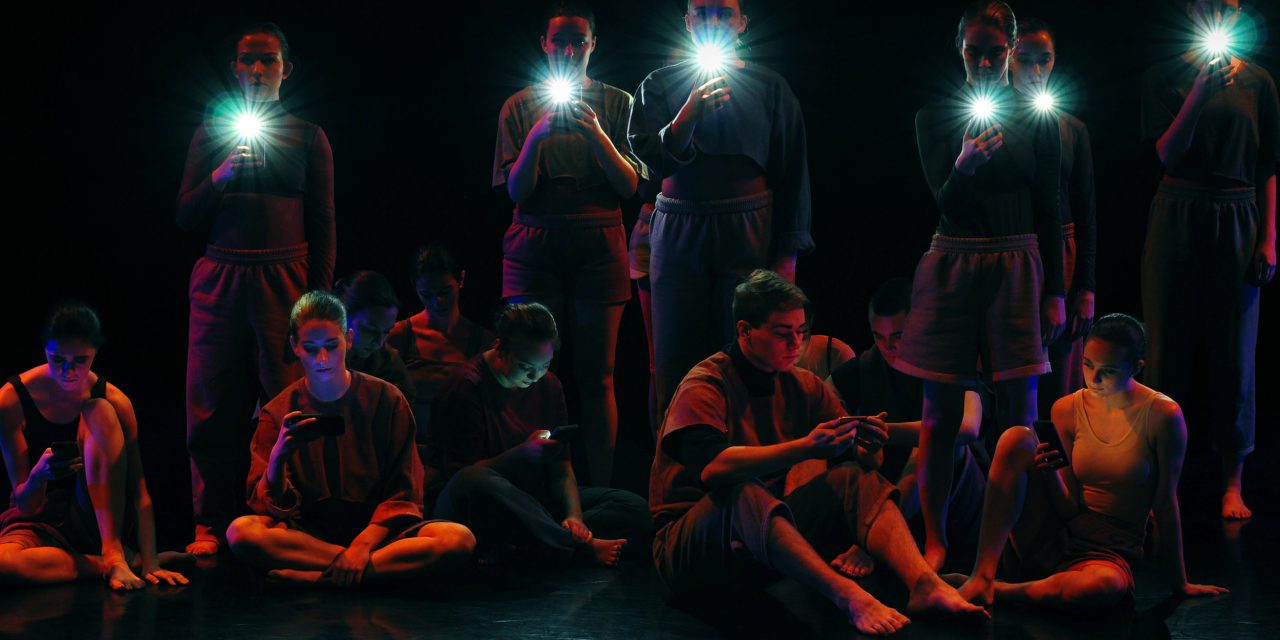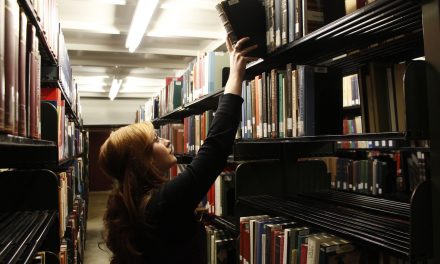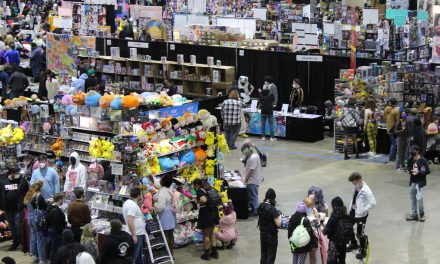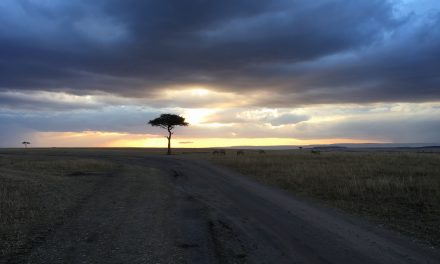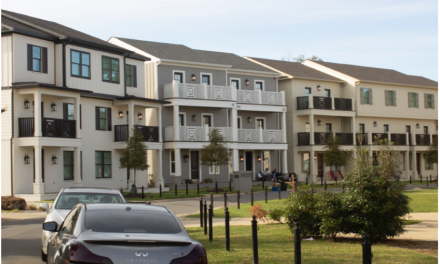STORY BY
CORA KANGAS
PHOTOS BY
MARK BARRY
DESIGN BY
EMMA GHAEMMAGHAMI
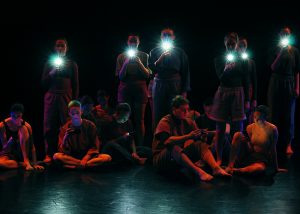
The stage is dark, abnormally so for the beginning of a dance show. Then the lights come on in the form of phone lights, aided by minimal stage lighting. The dancers look down like people do on campus on any given Friday, phone in hand, not paying attention to the world — even though they are halfway across it, in Edinburgh, Scotland.
If all the world’s a stage, why don’t more people dance? Here is just one answer to that question: technology. This is the idea that the Yonder Contemporary Dance Company sought to explore in their show, IRL. And something even more amazing? Most of the people who worked on the show itself are students.
If IRL is a dance performance, then the choreography is essential. Drew Martin, a junior dance and chemical engineering double major at UA, was one of the people who did a lot of that work to choreograph the show. “I started to question how much I used my phone and observing how much other people were. I also began to notice how easy it is to be sucked into trends because of social media and the internet.” Martin said on deciding what to do for the choreography. He wanted to show how much easier it is to be controlled by trends because of social media.
While the theme of the show made these thoughts into a dance, another thing that Martin had to think about was space. “I worked with a large group of people and I knew the stage was going to be small,” Martin said. He had to be strategic about placement and movement so as to fit everyone and everything in a tight space.
These ideas then had to be translated into a show. But communication varies in all settings — no two people are going to hear or say something the same way. So in order to make the dances and the show flow, everyone had to be understanding of everyone else. “Everyone had to collaborate on how to make clear transitions,” Martin said.
Dancer Maddie Arancibia, an Honors College student at The University of Alabama, spoke of the experience. “One choreographer that I worked with wanted to start from nothing and just see how the dance developed,” Arancibia said. “The other one I worked with had a clear idea of what she wanted from the beginning. Both let us create our own phrases and incorporate our own ideas. The entire time, it just felt like an open space to be creative.”
Martin and Kendra Giles, a UA Honors College dance major, both danced in the show and had a similar experience working with the choreographers. “There were no boundaries to what we could make,” Giles said. The pieces were a collaborative effort while retaining the original ideas from the choreographers, making the show more personal.
Yonder Contemporary Dance Company took this show around the South: to Tuscaloosa, Birmingham, Florence, Alabama, Memphis, Tennessee, and Atlanta, Georgia, then, across the Atlantic to Edinburgh, Scotland. They used audience feedback to mold the show as they performed their initial shows so that when they went to Scotland it would be as near to perfect as it could be. Giles says that this “offered a very personal experience for both the performers and the audience since no two shows were exactly the same.”
To Arancibia, the first tour was extremely important. “It allowed us to get comfortable with the show and develop chemistry with other company members,” she said. Although this was a beginning, the end result was the thing that gave all the work an extra special purpose.
Edinburgh would be where the show took them next. It was, as Giles says the experience of a lifetime and definitely something that will remain with the members of the company forever. The Edinburgh Fringe Festival is the biggest performing arts festival in the world, meaning that as undergraduate students they have performed on the largest live stage possible. It was established in 1947 and now features 53,232 across 25 days.
Something that was unusual for the company was the time allotted for warm up and leaving the area after the show. They had a 15 minute window on either side of their performance, as opposed to an hour or so that they might have before and after a show at the university. The stage in Scotland was small and the audience was extremely close to the stage, but the dancers found ways around these obstacles. “It ended up being the best stage for the way our show was written,” Arancibia said.
At the festival, they handed out flyers on the Royal Mile, the main throughway in Edinburgh’s Old Town. Their show, which was at its peak, received a four-star rating from a respected critic of the Fringe Festival and sold out for a show.
“One of the hardest things to combat during a year-long tour such as this one is always going to be falling into boring routines,” said Giles. The dancers had to adapt to performing in close quarters, learn how to work with all sorts of choreographers, and deal with the fatigue of having the tour go on for such an extended period of time.
From performers to audience members, the vision of a company was purveyed and to take it global meant pushing strength to its limits. The Yonder Dance Company was able to do just that, and have an amazing time making their dream into a reality.
Critic Review: https://broadwaybaby.com/shows/irl/724460

